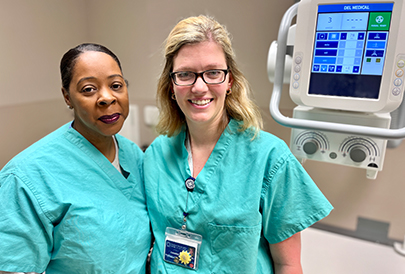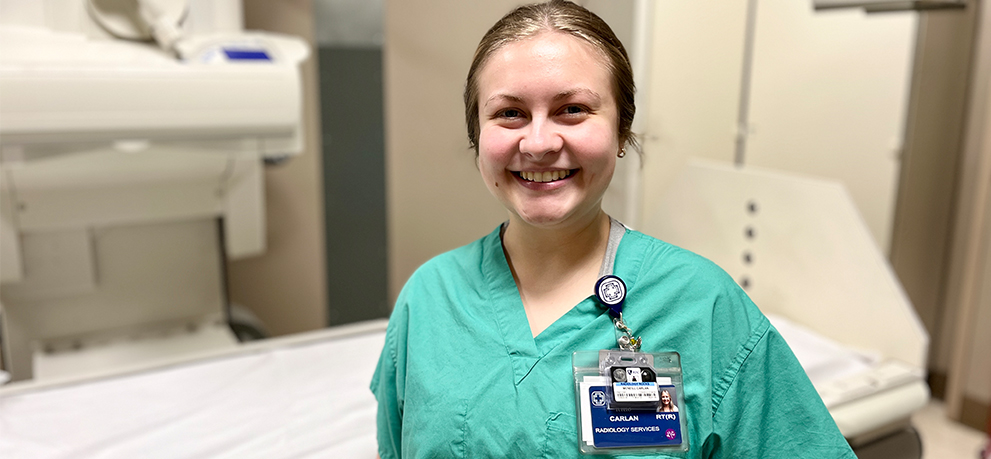Have a doctor’s order for an imaging study?

Essential Imaging Technology
X-ray is the most widely used medical imaging technique. NMHS facilities offer X-rays for imaging studies and to guide procedures using fluoroscopy to study moving structures.
Using a type of radiation called electromagnetic waves, X-ray images show the parts of your body in different shades of black and white. This is because different tissues absorb different amounts of radiation. Calcium in bones absorbs x-rays the most, so bones look white. Fat and other soft tissues absorb less and look gray. Air absorbs the least, spaces filled with air, like the lungs, look black. Although the radiation you receive during an X-ray is small, you may wear a lead apron to protect certain parts of your body during the exam. X-ray exams are available in all NMHS hospitals and outpatient imaging centers. Some common uses for X-ray include:
Checking for fractures and breaks in bones
Examining the lungs for pneumonia
Screening for breast cancer with mammograms
Computed tomography (CT) uses X-rays to create images.
Fluoroscopy uses X-rays and a fluorescent screen to study moving structures in the body. It is most commonly used to guide minimally invasive surgeries and procedures. It is available at our hospitals in Tupelo, Amory, Eupora, Iuka and West Point, Mississippi, and Hamilton, Alabama. Common uses of fluoroscopy include:
Visualizing the beating heart in the cardiac catheterization lab
Viewing the digestive processes or blood flow in combination with contrast agents
Precisely placing instruments for epidural injections or joint aspirations
NMHS Radiology is guided by best practices to avoid unnecessary medical exams and reduced exposure to radiation used in medical imaging.
We use Image Gently guidelines and adjust radiation doses for children.
We use Image Wisely guidelines for adults to keep radiation exposure low.
Related Locations
Imaging Awards
Related Resources
View AllNurse Link® is a free telephone triage and health information service provided by North Mississippi Health Services. Using computerized medical protocols, nurses direct callers to the most appropriate medical treatment.

Cancer Screening
Radiology plays an important part in screening and early detection for breast cancer and lung cancer. Breast cancer screening starts with mammography. Lung cancer screening uses low dose CT.

Cancer Screening
Radiology plays an important part in screening and early detection for breast cancer and lung cancer. Breast cancer screening starts with mammography. Lung cancer screening uses low dose CT.














